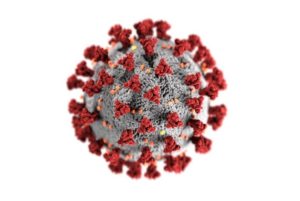 A study published in the journal Neurology concludes that despite the reported stroke-related complications of COVID-19, there has been a global decline in the volume of stroke hospitalisations, the administration of intravenous thrombolysis (IVT), and inter-facility IVT transfers between primary and comprehensive stroke centres. Additionally, researchers report medical centres with higher COVID-19 inpatient volumes experienced steeper declines.
A study published in the journal Neurology concludes that despite the reported stroke-related complications of COVID-19, there has been a global decline in the volume of stroke hospitalisations, the administration of intravenous thrombolysis (IVT), and inter-facility IVT transfers between primary and comprehensive stroke centres. Additionally, researchers report medical centres with higher COVID-19 inpatient volumes experienced steeper declines.
“While recovery of stroke hospitalisation was noted in the later pandemic months, our analysis of more than 254,000 stroke hospitalisations worldwide found an 11.5% decrease in stroke admissions, a 13.2% decrease in intravenous thrombolysis and an 11.9% decrease in IVT transfers during the first four pandemic months, compared to the immediately preceding period,” explained co-corresponding author Thanh N Nguyen, professor of neurology, neurosurgery and radiology at Boston University School of Medicine (BUSM), and director of the Neurointerventional Service at Boston Medical Center, Boston, USA.
The researchers conducted a cross-sectional, observational, retrospective study across six continents, 70 countries and 457 stroke centres. They found that there were 91,373 stroke admissions in the four months immediately before, compared to 80,894 admissions during the pandemic months. In addition, they report that there were 13,334 IVT therapies in the four months preceding compared to 11,570 procedures during the pandemic. Inter-facility IVT transfers decreased from 1,337 to 1,178.
“These reductions were observed regardless of COVID-19 hospitalisation burden, pre-pandemic stroke and IVT volumes,” added lead author Raul Nogueira, professor of neurology at Emory University School of Medicine, and Director of interventional neurology/neuroradiology at Grady, Atlanta, USA.
The researchers also noted a recovery of stroke hospitalisation volume (an increase of 9.5%) in the two subsequent months versus the two initial months of the pandemic, with greater recovery in hospitals with lower COVID-19 hospitalisation volume, high volume stroke centres and comprehensive stroke centres.
The researchers learned that as of 2020, many countries in Africa still do not have the ability to administer intravenous thrombolysis as part of their routine stroke care. The authors highlight this disparity in global stroke care, given the data in favour of IVT therapy from the NINDs (National Institute of Neurological Disorders and Stroke) studies from more than 20 years ago.












